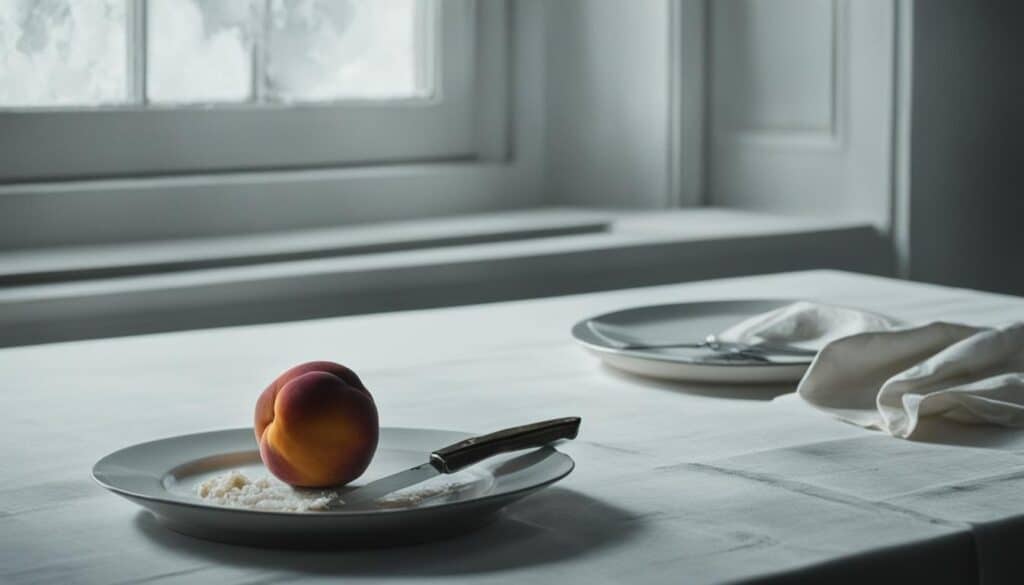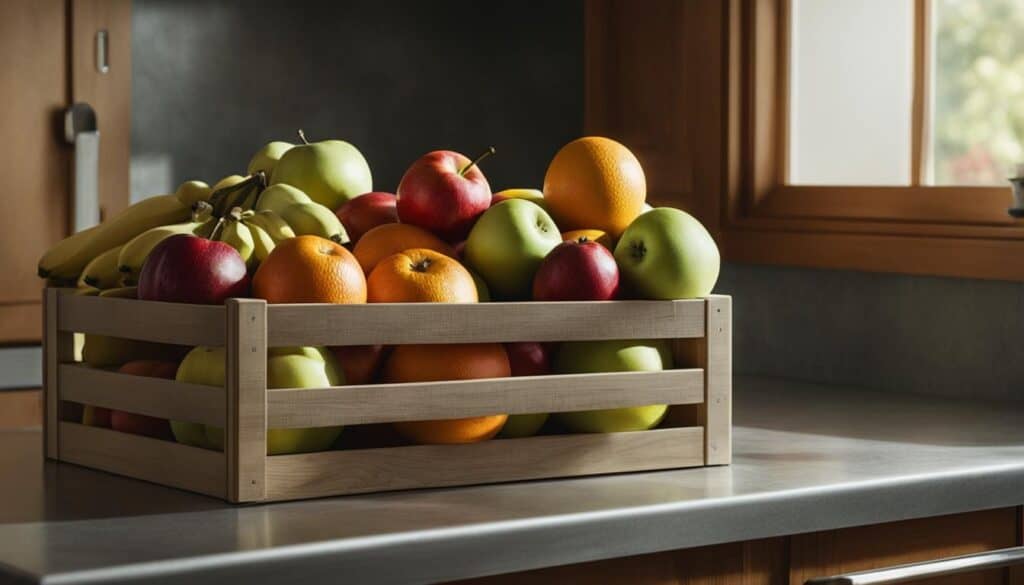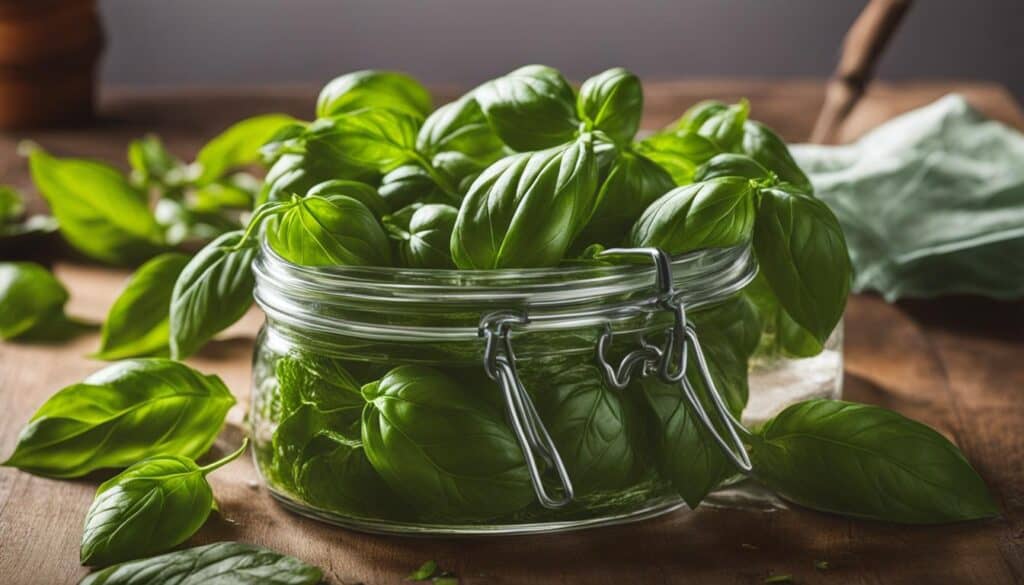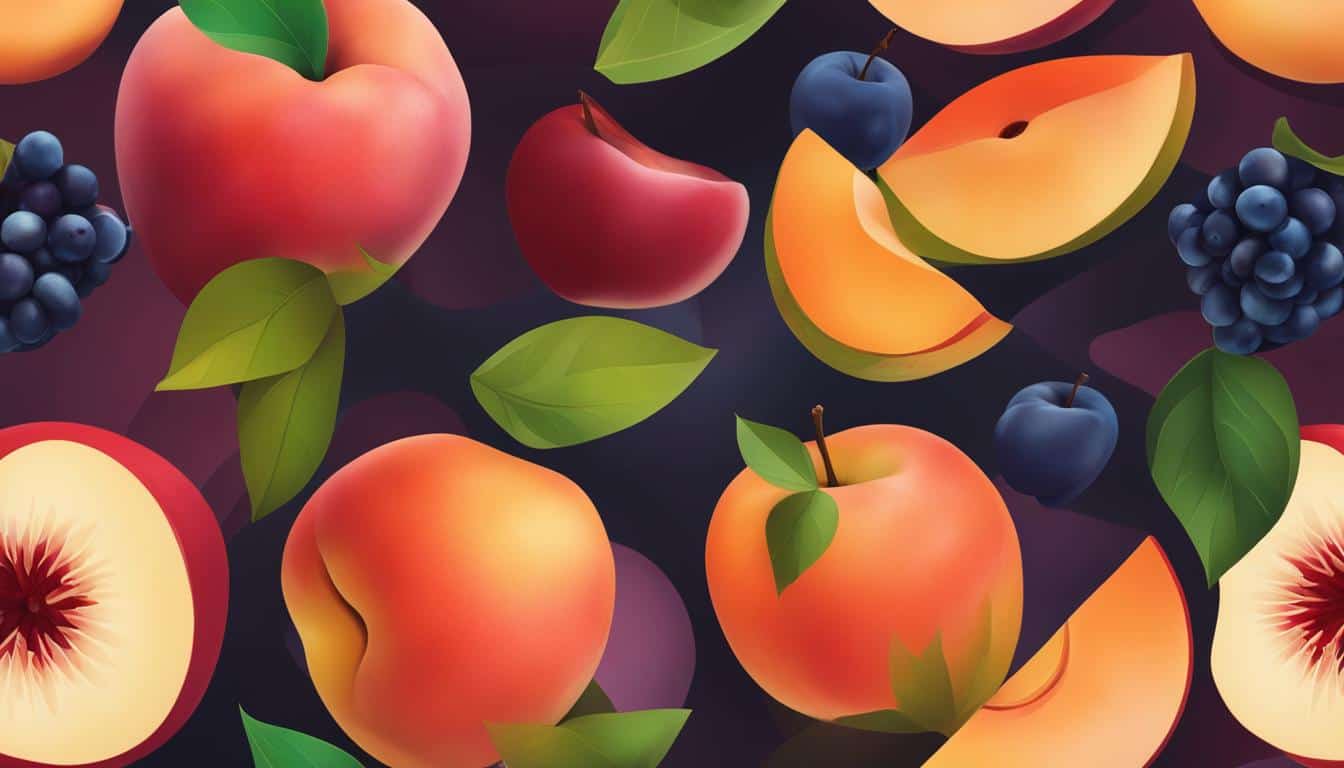Greetings! Today, I want to dive into a common issue that many of us have experienced when biting into a piece of fruit – mealiness. You know what I’m talking about – that dry, unpleasant texture that can ruin the enjoyment of an otherwise delicious fruit. But why does fruit get mealy in the first place?
When it comes to the causes of mealy fruit, there are a few factors at play. One of the main culprits is the ripening process. Changes to the cell wall during ripening can lead to a loss of juice and the development of that dreaded mealy texture.
Mealiness is particularly common in fruits like peaches, plums, and nectarines. Some of this can be attributed to the genetics of certain fruit cultivars. That’s right, some peach varieties are more susceptible to mealiness than others. So, if you’ve ever had a mealy peach, it might just be because of the specific cultivar.
Another factor that can contribute to mealy fruit is postharvest handling practices. Improper cooling after harvest, for example, can increase the occurrence of mealiness. That’s why it’s essential for growers to ensure proper cooling at the right temperature to minimize the development of mealy texture.
Key Takeaways:
- Mealiness in fruit refers to a dry, unpleasant texture caused by changes to the cell wall during ripening.
- Genetics play a role in the susceptibility of certain fruit cultivars to mealy texture, such as peaches.
- Improper postharvest handling practices, like inadequate cooling, can increase the occurrence of mealy fruit.
What is Mealiness?
Mealiness is a common fruit texture problem that affects certain varieties of fruits. When a fruit is mealy, it lacks the expected juiciness and has a dry and unpleasant texture. It is often described as feeling grainy or cotton-like when bitten into. The presence of mealiness can significantly impact the overall eating experience of a fruit.
The cause of mealiness lies in the changes that occur in the fruit’s cell wall during the ripening process. These changes can result in a breakdown of the cell structure, leading to a loss of moisture and a subsequent loss of juiciness. Despite the loss of juice, the fiber of the fruit remains intact, further contributing to the dry and unappealing texture.
Mealiness is commonly observed in fruits such as peaches, plums, nectarines, and apples. However, it can also occur in other types of fruits. The severity of mealiness can vary from mildly affected fruits to those that are completely inedible.
In order to fully understand mealiness and its impact, let’s take a closer look at the cell wall changes and the factors that contribute to this fruit texture problem.
“Mealiness is defined as the lack of juiciness in fruit while the fiber remains intact.”
Cell Wall Changes and Mealiness
During the ripening process, fruits undergo various biochemical changes that are controlled by enzymes. One of these changes is the breakdown of the pectin present in the fruit’s cell wall. Pectin is a complex carbohydrate that provides structural support to the cells and contributes to the textural properties of the fruit.
When the breakdown of pectin occurs prematurely or excessively, the fruit’s cell wall loses its integrity. This can lead to a loss of moisture and a subsequent decrease in juiciness. At the same time, the fiber within the fruit remains intact, resulting in a dry and mealy texture.
The cell wall changes responsible for mealiness can be influenced by various factors, including genetic factors specific to certain fruit varieties and the postharvest handling practices employed.
Genetic Factors and Mealiness
Some fruit varieties are more susceptible to mealiness than others due to their genetic makeup. For example, certain peach cultivars have been found to be more prone to developing a mealy texture. These cultivars may have inherent characteristics that make them more susceptible to cell wall breakdown and moisture loss during ripening.
Understanding the genetic factors associated with mealiness can be helpful for both fruit growers and consumers. Growers can choose varieties that are less prone to mealiness to minimize the occurrence of this texture problem. Meanwhile, consumers can make informed choices when selecting fruits, opting for varieties that are less likely to become mealy.
Postharvest Handling Practices and Mealiness
The way fruits are handled after harvest can also influence the development of mealiness. Improper postharvest practices, such as inadequate cooling or temperature fluctuations, can exacerbate or accelerate the occurrence of mealiness in fruits.
Cooling fruits promptly after harvest at the appropriate temperature is crucial for minimizing mealiness. For instance, peaches should be cooled immediately after harvest at a temperature of 0°C/32°F to slow down the enzymatic activity responsible for cell wall breakdown. Failure to cool the fruits promptly can lead to an increased risk of mealiness.
Additionally, it has been found that subjecting peaches to a temperature of 20°C/68°F for 48 hours prior to cooling can further reduce the development of mealiness.
Preventing and Managing Mealiness
While mealiness can be a frustrating texture problem in fruits, there are steps that can be taken to prevent and manage it. For fruit growers, selecting appropriate varieties and implementing proper postharvest handling practices are key to minimizing mealiness in fruits.
For consumers, it is important to choose fruits that are less prone to becoming mealy and to handle and store them properly. Storing fruits at their appropriate temperature and avoiding temperature fluctuations can help maintain their desired texture and juiciness.
By understanding the causes and factors contributing to mealiness, both growers and consumers can take proactive measures to ensure that the fruits they enjoy have the best texture and eating experience.
Genetic Factors

When it comes to the mealy texture of fruits, genetic factors play a significant role. Certain peach cultivars are more prone to mealiness than others, with late-season cultivars being particularly susceptible. To mitigate the issue of mealy fruit, growers must carefully select cultivars that are less likely to develop this undesirable texture.
However, for consumers purchasing fruit from grocery stores, it can be challenging to identify the specific cultivar. Lack of labeling or information about the cultivar makes it difficult for consumers to make informed decisions and choose fruits that are less likely to become mealy.
To address this issue, initiatives educating consumers about the genetic factors affecting fruit texture and highlighting peach cultivars with lower susceptibility to mealiness could greatly improve the overall fruit-buying experience. Increased awareness would enable consumers to make more informed choices, ensuring that they select peaches that are less likely to develop a mealy texture.
Peach Cultivars and Susceptibility to Mealiness
| Cultivar | Susceptibility to Mealiness |
|---|---|
| Harvester | Low |
| Glory | High |
| June Gold | Medium |
| Spring Lady | Low |
| Sugar Lady | Medium |
Postharvest Handling Practices
Proper postharvest handling practices are crucial in preventing mealy fruit. One critical practice is cooling the fruit immediately after harvest at the preferred temperature of 0°C/32°F. This cooling process significantly reduces the occurrence of mealiness in the fruit.
Research has shown that an additional step can further decrease the development of mealiness in peaches. By keeping the peaches at 20°C/68°F for 48 hours prior to cooling, the amount of mealy texture that develops is significantly reduced.
Key Recommendations for Postharvest Handling Practices:
- Cool the fruit immediately after harvest at 0°C/32°F.
- Keep peaches at 20°C/68°F for 48 hours prior to cooling.
By following these postharvest handling practices, you can effectively prevent the occurrence of mealy fruit, ensuring that you enjoy fresh, juicy, and flavorful produce.
Are Mealy Peaches Safe to Eat?
Mealy peaches are safe to eat, but the taste and texture may leave much to be desired. When a peach becomes mealy, it loses its juiciness and develops a dry and unpleasant texture. The lack of juiciness can make the peach less enjoyable to consume.
While mealy peaches are not harmful or unsafe, they do not provide the satisfying flavor and texture that we associate with fresh, ripe peaches. The mealy texture can be off-putting, affecting the overall eating experience.
It is always best to avoid consuming mealy fruit, including peaches, and instead opt for fresh and juicy alternatives. By choosing ripe, non-mealy peaches, you can delight in the sweet, juicy, and flavorful experience that peaches are known for.

Let’s take a closer look at the causes of mealiness in peaches and explore how to prevent it in the next section.
Storing Fruits to Prevent Mealiness
To prevent fruit from becoming mealy, it is important to store them properly. One of the key factors to consider is allowing peaches and other stone fruits to ripen fully on the counter before refrigerating them. Cold temperatures can lead to a mealy texture in soft fruits, so it’s best to store them at the right temperature to preserve their freshness and juiciness.
Extreme temperature fluctuations should also be avoided during the storage of fruits. Sudden changes in temperature can impact the quality and texture of the fruit, potentially resulting in mealiness. By maintaining a stable and consistent temperature during storage, you can help prevent the development of unwanted texture in your fruits.
Here are some storage tips to help you preserve the freshness of your fruits and avoid mealy texture:
- Allow stone fruits to fully ripen on the counter before refrigerating them.
- Store fruits at the appropriate temperature to prevent the development of mealy texture.
- Avoid extreme temperature fluctuations during storage to maintain fruit quality.
“Proper storage is crucial for preserving the freshness and quality of fruits. By following these storage recommendations, you can enjoy delicious and juicy fruits without the unpleasant texture of mealiness.”
Now let’s take a look at a table summarizing the storage recommendations for some common fruits:
| Fruit | Storage Recommendations |
|---|---|
| Peaches and stone fruits | Allow them to fully ripen on the counter before refrigerating. |
| Tomatoes | Store them at room temperature to preserve their flavor. |
| Melons with netted skin | Let them ripen fully before refrigerating. |
| Smooth-skin melons | They can be chilled without significant changes. |
| Cucumbers, eggplants, and peppers | Refrigerate temporarily, but avoid leaving them for too long. |

Continuing to store your fruits properly can go a long way in preserving their freshness and preventing the development of mealiness. By following these storage recommendations, you can ensure that each bite of fruit is juicy, flavorful, and free from unwanted texture issues.
The Role of Temperature in Fruit Texture
Temperature plays a significant role in the texture of fruits. The way we cool fruits, either too quickly or at the wrong temperature, can have a direct impact on their texture. When fruits are cooled improperly, it can result in a mealy texture that is dry and unappealing.
Different fruits have specific temperature requirements for ripening and storage. Understanding these temperature needs is crucial in preventing mealy fruit texture. Let’s take a closer look at how temperature affects fruit texture and what we can do to avoid mealy fruit.
The Effects of Temperature on Fruit
When fruits are exposed to low temperatures too soon, the ripening process is disrupted. This can lead to a breakdown in cell structure, causing the fruit to become mealy. On the other hand, if fruits are stored at temperatures that are too high, they may overripen and become mushy.
It’s essential to strike the right balance and provide fruits with the optimal temperature conditions for ripening and storage. This ensures that they develop the desired texture and maintain their juiciness.
Avoiding Mealy Fruit Texture
To avoid mealy fruit texture, it’s important to follow proper temperature guidelines. Here are some tips:
- Research the optimal temperature requirements for the specific fruits you have.
- Cool fruits gradually and at the recommended temperature after harvest.
- Avoid exposing fruits to extreme temperature fluctuations.
- Store fruits at the appropriate temperature for their ripening stage.
- Be mindful of fruits’ temperature sensitivity and avoid refrigerating fruits that are prone to mealy texture.
By taking these steps, you can help preserve the desired texture of fruits and enjoy them at their best.
Fruit-Specific Storage Recommendations
When it comes to preserving the texture and flavor of various fruits, proper storage is key. Here are some fruit storage tips to ensure you enjoy the freshest produce:
Peaches
Before refrigerating peaches, it is important to allow them to fully ripen. This ensures optimal flavor and texture. Once ripe, place them in the refrigerator to maintain their freshness.
Tomatoes
Tomatoes are best stored at room temperature to preserve their distinct flavor and aroma. Avoid refrigerating tomatoes as it can cause them to lose their taste and become mealy.
Melons
The storage recommendations for melons depend on the type of skin they have:
| Netted-Skin Melons | Smooth-Skin Melons |
|---|---|
| These melons, like cantaloupes, should be allowed to fully ripen at room temperature before refrigeration. This enhances their sweetness and juiciness. | Smooth-skin melons, such as honeydew, can be chilled in the refrigerator without significant texture changes. |
Cucumbers, Eggplants, and Peppers
While cucumbers, eggplants, and peppers can be temporarily refrigerated, it is best to avoid leaving them in the refrigerator for too long. Extended refrigeration can lead to texture issues, affecting their overall quality. Use them promptly for the best taste and texture.
In this section, we’ve discussed fruit-specific storage recommendations to help you maintain the texture and flavor of various fruits. Properly storing peaches, refrigerating tomatoes at room temperature, ripening melons before chilling, and using cucumbers, eggplants, and peppers promptly can all contribute to preserving the freshness and texture of these fruits. Remember to keep these recommendations in mind to enjoy the best quality produce.
Basil Storage Tips
When it comes to storing basil, it’s crucial to handle it with care to preserve its freshness and vibrant flavor. Basil is sensitive to cold temperatures, and refrigeration can actually cause more harm than good. To avoid blackened basil leaves and ensure optimal storage conditions, follow these tips:
- Keep basil at room temperature: Basil should be stored at room temperature, ideally between 50°F and 70°F (10°C and 21°C). This temperature range provides the best conditions for maintaining basil’s flavor, color, and aroma.
- Avoid exposure to direct sunlight: Direct sunlight can cause basil leaves to wilt and lose their vibrant green color. Place basil away from windows or any other source of direct light to protect its delicate leaves.
- Store basil in a bouquet: To keep basil fresh for longer, place the stems in a glass of water, just like you would with fresh flowers. This method helps maintain the herb’s moisture and keeps it from wilting prematurely.
- Use or preserve basil promptly: Basil is at its best when used fresh. If you can’t use it immediately, you can dry the leaves or make a basil-infused oil to extend its shelf life. Drying basil involves hanging the stems in a well-ventilated area until the leaves are crisp. Alternatively, you can blend fresh basil leaves with olive oil and store the mixture in a sealed container in the refrigerator.
By following these basil storage tips, you can enjoy fresh and aromatic basil for longer periods, enhancing the flavors of your favorite dishes.

Storing basil correctly can help preserve its vibrant color and aromatic flavor. Avoid refrigerating basil and instead keep it at room temperature for optimal results.
Conclusion
To preserve the quality of your fruit and avoid the unpleasant texture of mealy fruit, it is crucial to pay attention to genetics, postharvest handling practices, and temperature during fruit storage.
By following proper storage recommendations and allowing your fruits to ripen fully, you can maintain their natural juiciness and prevent texture issues. Remember to choose peach cultivars that are less prone to mealiness and ensure they are cooled immediately after harvest at the correct temperature.
Understanding the factors that contribute to mealiness in fruit can help you enjoy fresh, flavorful fruits all year round. Take care of your fruits through proper storage techniques, and savor their delicious taste while avoiding any unwanted texture problems.
FAQ
Why does fruit get mealy?
Fruit can become mealy due to changes in the cell wall during the ripening process. This can result in a dry and unpleasant texture.
What is mealiness?
Mealiness refers to the lack of juiciness in fruit while the fiber remains intact. When you bite into mealy fruit, it feels dry and does not have the expected texture.
What are the genetic factors that contribute to mealiness?
Certain peach cultivars are more prone to mealiness. Late-season cultivars are particularly susceptible. It is essential for growers to choose cultivars that are less likely to become mealy to prevent this issue.
How can postharvest handling practices prevent mealy fruit?
Proper cooling of fruit immediately after harvest at the preferred temperature of 0°C/32°F significantly reduces the occurrence of mealiness. Keeping peaches at 20°C/68°F for 48 hours before cooling further decreases the development of mealy texture.
Are mealy peaches safe to eat?
Yes, mealy peaches are safe to eat, but their lack of juiciness and dry texture can make them unappealing in terms of taste.
How can I store fruit to prevent mealiness?
Allow peaches and other stone fruits to ripen fully on the counter before refrigerating them. Cold temperatures can lead to mealy texture in soft fruits. Avoid extreme temperature fluctuations during storage.
What is the role of temperature in fruit texture?
Temperature plays a significant role in fruit texture. Cooling fruit too soon or at the wrong temperature can result in mealy texture. Different fruits have different temperature requirements for ripening and storage.
What are some fruit-specific storage recommendations?
Peaches should be fully ripened before refrigerating. Tomatoes are best kept at room temperature. Netted-skin melons should ripen fully before refrigerating, while smooth-skin melons can be chilled without significant changes. Cucumbers, eggplants, and peppers can be refrigerated temporarily but should not be left for too long to avoid texture issues.
How should I store basil?
Basil is sensitive to cold temperatures and should be stored at room temperature. Refrigeration can cause blackening and deterioration of basil leaves. It is best to use basil immediately or store it in a cool, dry place.
What can I do to preserve fruit freshness and avoid mealy texture?
By understanding the factors that contribute to mealiness, such as genetics, postharvest handling practices, and temperature during fruit storage, you can follow proper storage recommendations and allow fruits to ripen fully. This will help maintain their juiciness and prevent texture issues.





Leave a Reply